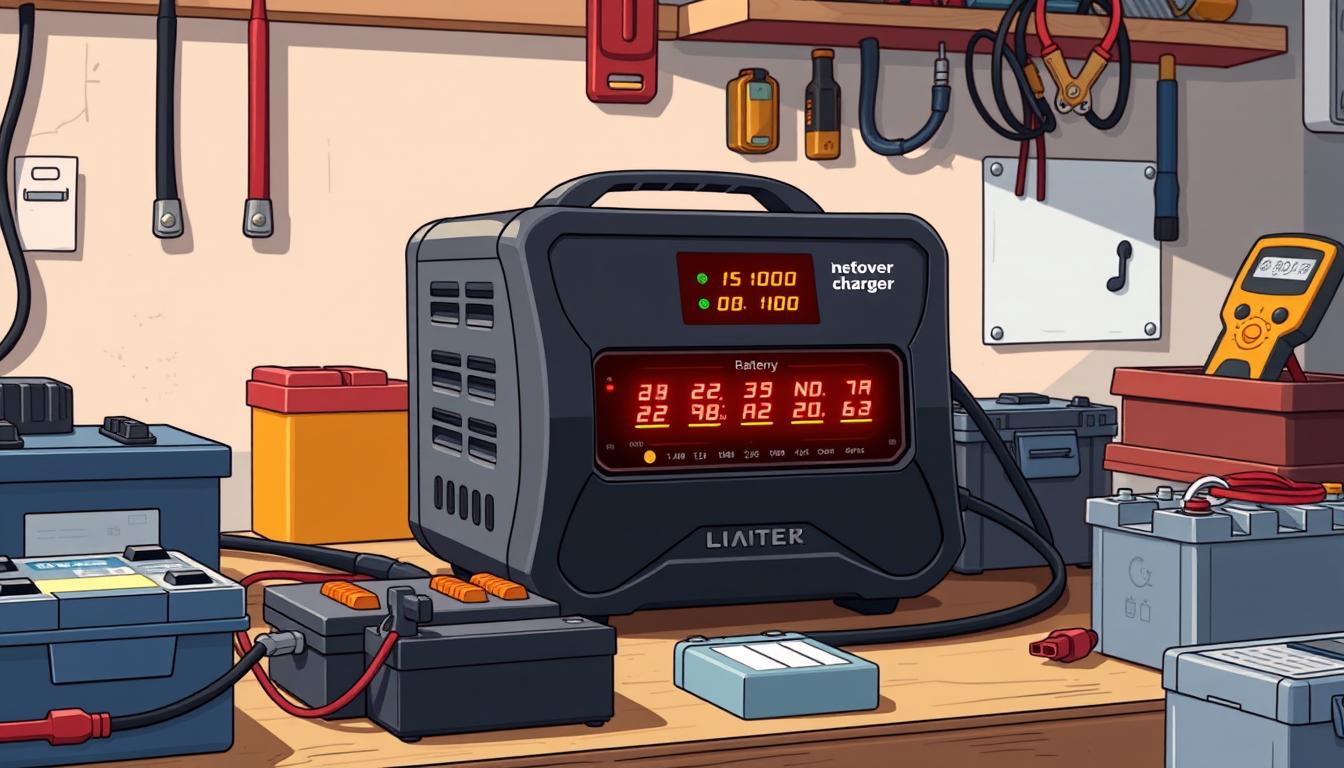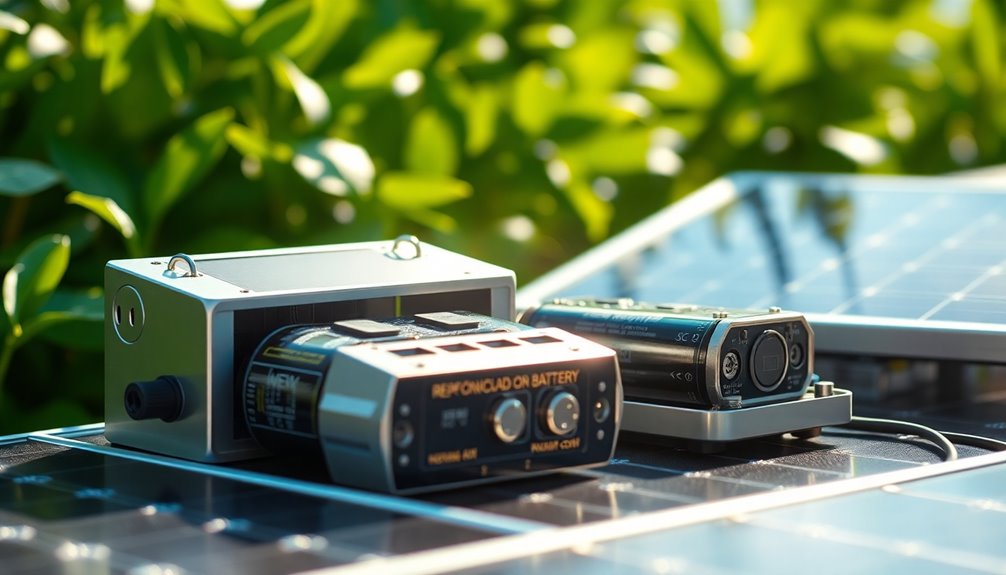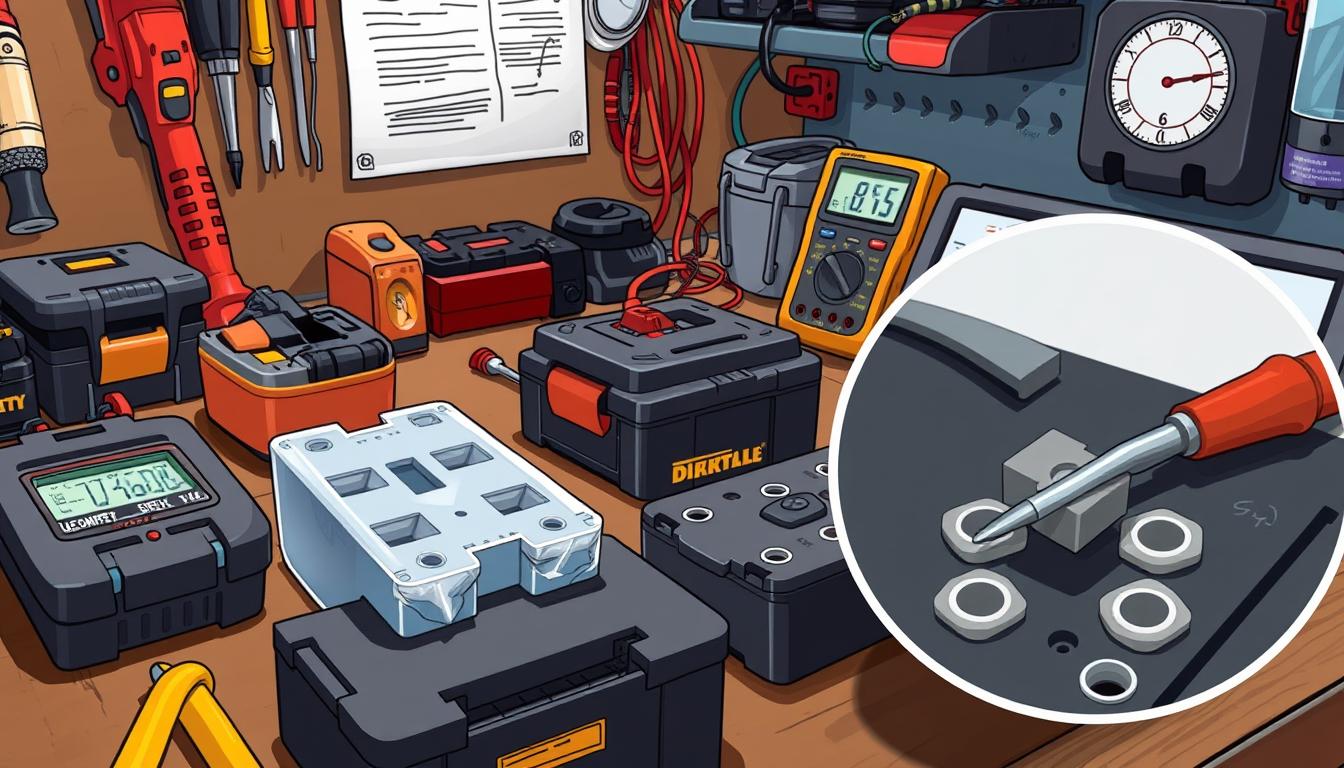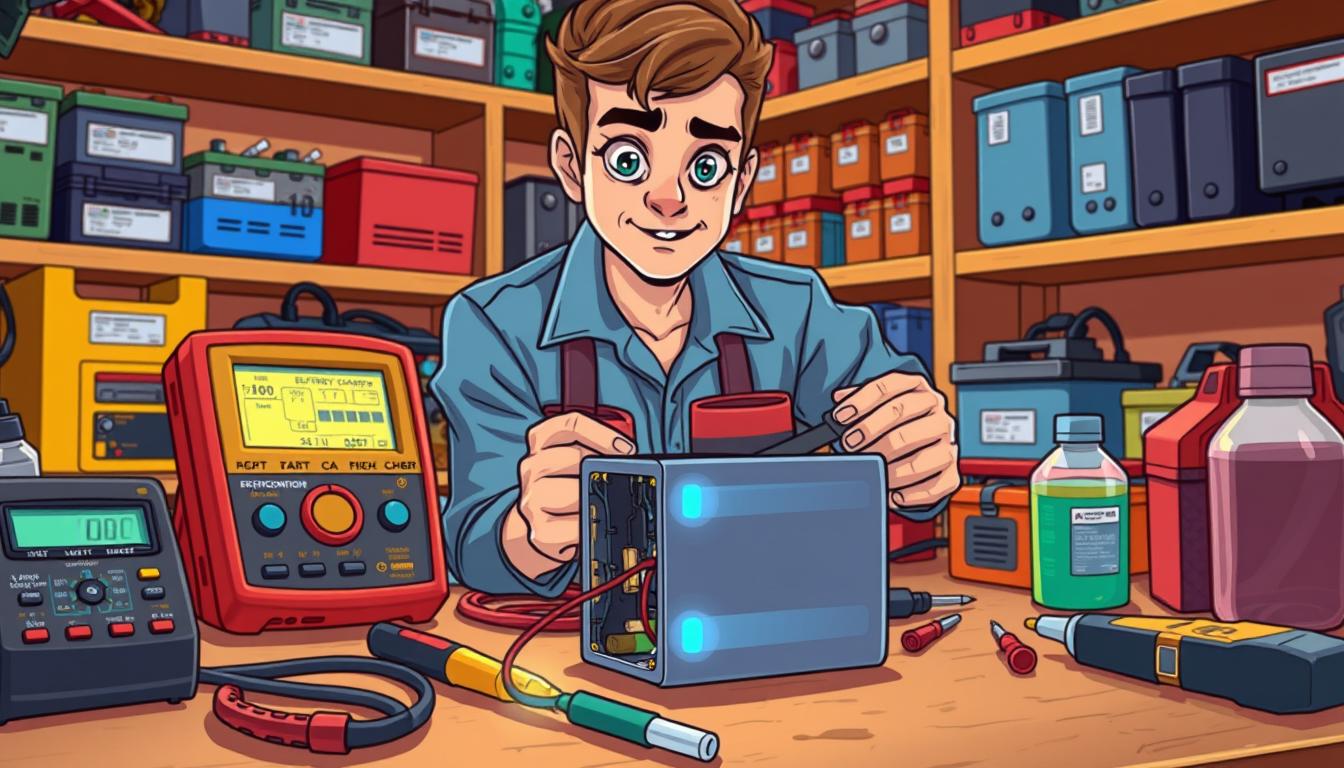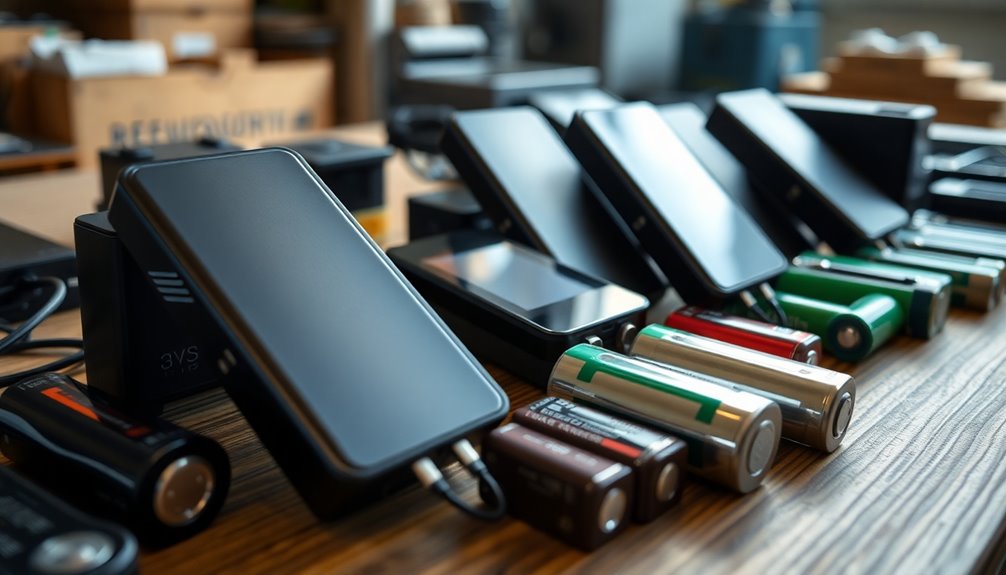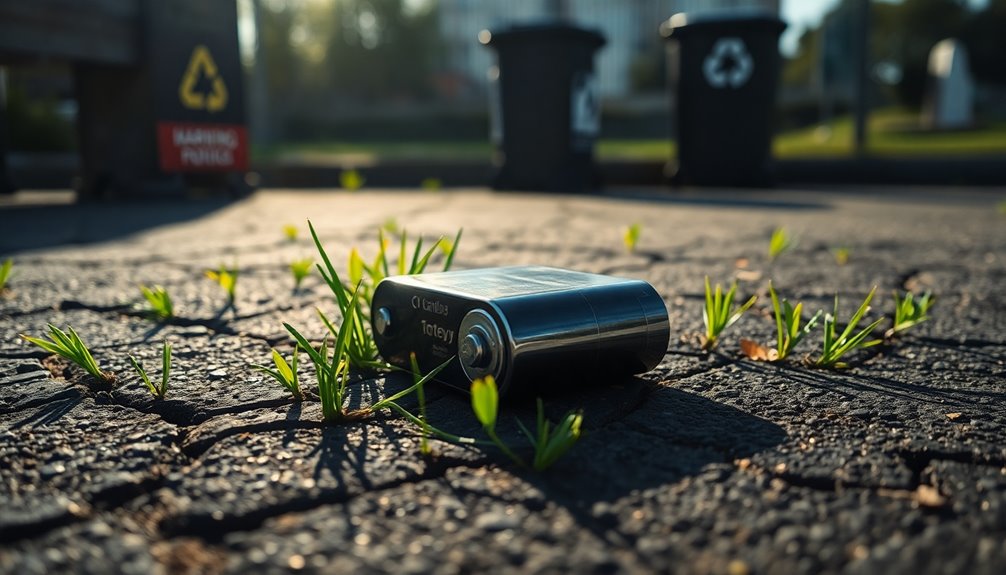Did you know that around 50% of batteries may be revived with the right techniques? This surprising statistic has led many users to explore battery reconditioning chargers as a potential solution for bringing seemingly dead batteries back to life1. With an average reconditioning duration of 24 hours, a lot of curiosity surrounds their effectiveness and real-world application1. As these chargers grow in popularity, you might be asking yourself: do battery reconditioning chargers work, and are they worth your investment? In this article, we will investigate the mechanics behind battery reconditioning chargers, detailing how they operate and their overall performance, especially when it comes to battery rejuvenation charger performance. By understanding more about this technology, you can make informed decisions regarding battery maintenance and restoration—a crucial consideration for various applications, from vehicles to your everyday electronic devices.
Key Takeaways
- Approximately 50% of batteries have the potential to be revived.
- Reconditioning a battery typically takes about 24 hours.
- Regular use of reconditioning chargers can save costs by extending battery life.
- Choosing the right reconditioning charger can significantly impact battery performance.
- AGM batteries particularly benefit from specialized reconditioning modes.
Understanding Battery Reconditioning Chargers
Battery reconditioning chargers play a vital role in extending the life and performance of rechargeable batteries. You may wonder what these specialized devices are and how they function to restore battery health effectively. With various types of batteries, from lead-acid to lithium-ion, understanding their mechanisms can help you achieve better results.
What Are Battery Reconditioning Chargers?
Battery reconditioning chargers are devices specifically designed to revive depleted batteries. Most rechargeable batteries, including lead-acid, nickel-cadmium (NiCd), nickel-metal hydride (NiMH), and lithium-ion batteries, can be reconditioned2. These chargers deliver a controlled pulse of energy that can rejuvenate battery cells by breaking down sulfate crystals that hamper functionality.
How Do They Work?
The operation of battery reconditioning chargers involves a multi-stage charging process that ensures safe and efficient charging. Automatic shut-off features stop the charging once the battery reaches full capacity, preventing damage3. The reconditioning time typically varies from several hours to a few days depending on the battery type and condition2. Following safety precautions, such as wearing protective gear and working in well-ventilated areas, is crucial while reconditioning batteries3.
Benefits of Using a Reconditioning Charger
Utilizing a battery reconditioning charger offers several advantages, including cost savings and environmental benefits. Reviving old batteries not only reduces waste but also allows you to maximize your battery investment. With proper tools and the right techniques, you can safely recondition lead-acid batteries at home2. Additionally, battery restoration charger results can restore the functionality and capacity of couches of old batteries, improving their run-time and overall reliability1.
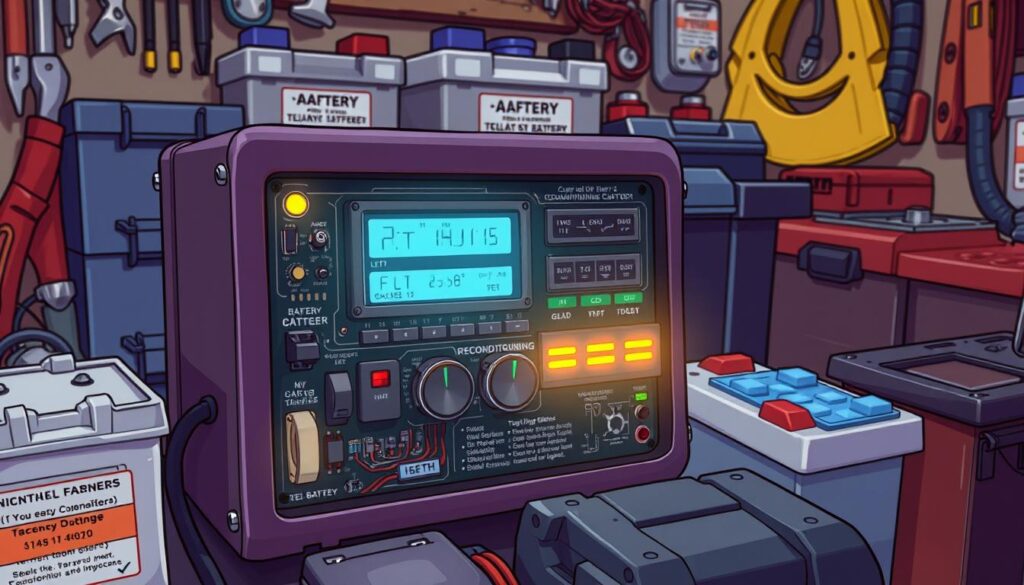
| Battery Type | Typical Voltage | Capacity (Ah or mAh) | Lifespan (Years) |
|---|---|---|---|
| Lead-Acid | 12V | Up to 100 Ah | 3-5 |
| NiMH | 1.2V | Varies (commonly used in tools and cameras) | 3-5 |
| NiCd | 1.2V | Varies (used in tools) | 2-5 |
| Lithium-Ion | 3.7V | Up to 3000 mAh | 2-3 |
Types of Batteries Compatible with Reconditioning Chargers
Understanding the types of batteries compatible with reconditioning chargers is essential for anyone looking to enhance battery performance or prolong lifespan. Reconditioning chargers are versatile devices suitable for a range of battery types, each with distinct characteristics and requirements.
Lead-Acid Batteries
Lead-acid batteries are among the most common types found in vehicles, with an average lifespan of 3 to 5 years3. These batteries can be effectively reconditioned using specific chargers designed for this purpose. The reconditioning process involves desulfation, which eliminates sulfate crystals that accumulate over time and hinder battery performance3. With proper safety measures, individuals can safely recondition these batteries at home without needing professional help2.
Nickel-Cadmium (NiCd) Batteries
Nickel-cadmium batteries are known for their robustness and ability to deliver a consistent performance. Although they have been largely replaced by newer technologies, they can still benefit from reconditioning. This type of battery typically requires specific chargers designed for NiCd varieties to ensure optimal results and to avoid potential damage3.
Lithium-Ion Batteries
Lithium-ion batteries, widely used in portable electronics, have a lifespan of around 2 to 3 years3. Like NiCd batteries, they require specific chargers tailored for lithium-ion technology. The process of reconditioning lithium-ion batteries can greatly improve their longevity and performance when performed correctly2. Keeping an eye on battery performance is key, as noticeable drops in efficiency may indicate the need for reconditioning2.
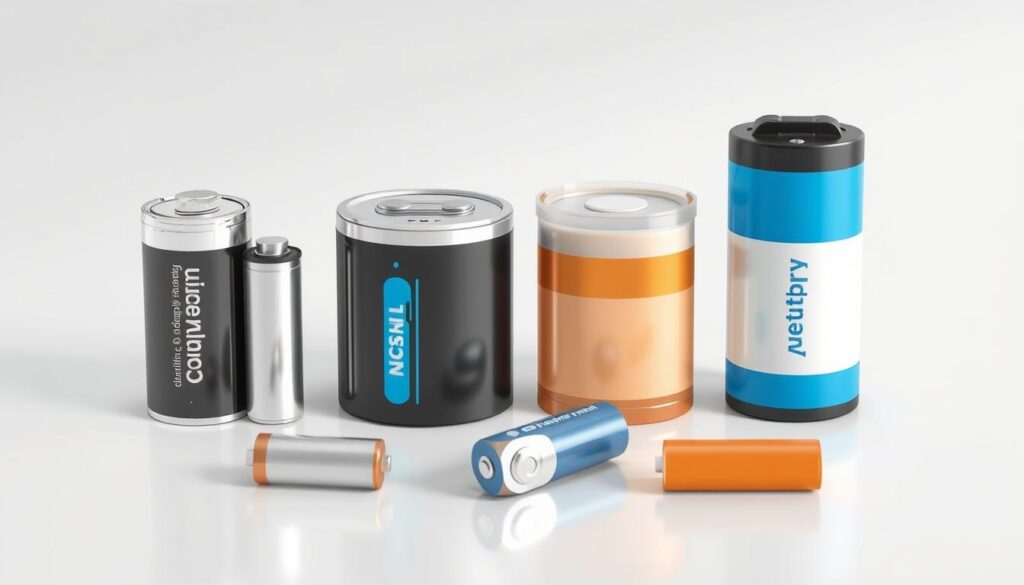
| Battery Type | Common Applications | Lifespan | Reconditionability |
|---|---|---|---|
| Lead-Acid | Cars, trucks | 3-5 years | Yes |
| Nickel-Cadmium (NiCd) | Power tools, emergency lighting | 2-3 years | Yes |
| Lithium-Ion | Smartphones, laptops | 2-3 years | Yes |
Utilizing the right charger for each battery type can lead to a higher battery reconditioning device success rate and longer battery life. Understanding do battery desulfators really work can also contribute to more informed decisions when selecting chargers and diagnosing battery issues2.
The Science Behind Battery Reconditioning
Understanding the science behind battery reconditioning helps highlight how effective these processes can be in restoring battery life. Batteries experience capacity loss due to a myriad of factors including age, improper charging practices, and environmental conditions. This degradation manifests itself in various forms, leading to decreased performance over time, which a battery reconditioning charger aims to combat.
How Capacity Loss Occurs
Capacity loss primarily takes place due to chemical processes that unfold within the battery. One major contributor is sulfation, where lead sulfate crystals build up on battery plates, severely restricting overall function. Regular monitoring and reconditioning can effectively address these issues, showcasing impressive battery reconditioning charger effectiveness in prolonging battery lifespan.
The Role of Sulfation
Sulfation impedes the chemical reaction essential for proper battery performance. This accumulation erodes the battery’s ability to hold charge. As a result, you may observe recognizable signs such as reduced runtime, overheating, or physical damage. Addressing sulfation through reconditioning can reverse some of these detrimental effects, thereby improving battery restoration charger results.
Steps Involved in Reconditioning
The reconditioning process involves several crucial steps that aim to restore battery functionality. Initially, safety precautions are essential. Voltage checking follows, allowing you to gauge the battery’s health. Techniques such as desulfation and equalization charging for lead-acid batteries or cell balancing for lithium-ion batteries are employed. The entire process usually takes a couple of hours, proving to be a sustainable and cost-effective solution for battery maintenance.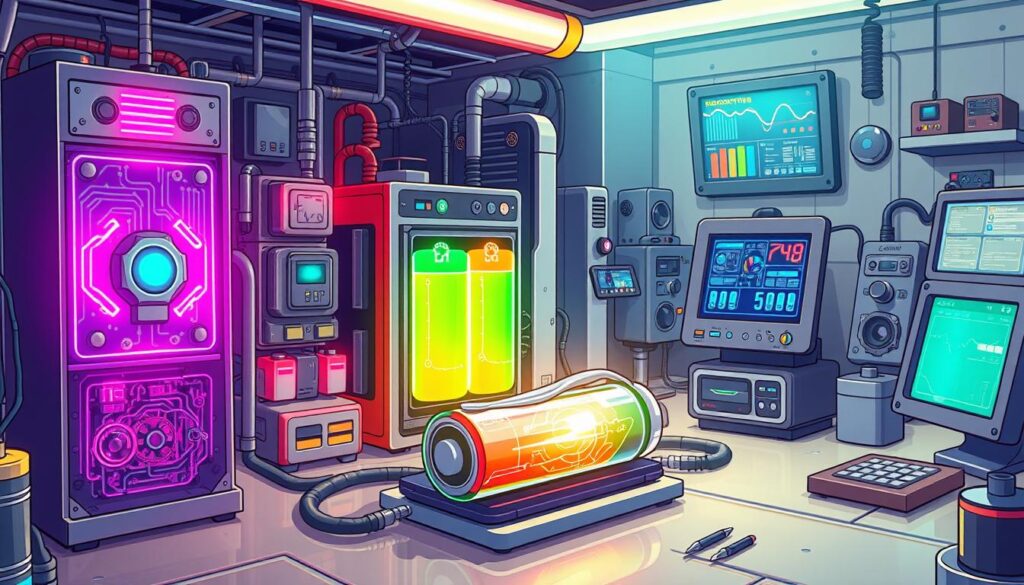
Ultimately, embracing the science behind battery reconditioning not only extends battery lifespan but also diminishes electronic waste, aligning with modern eco-friendly practices. This procedure presents an opportunity to revitalize batteries and delay the need for new replacements, tapping into its potential for economic and environmental benefits45.
Are Reconditioning Chargers Effective?
The effectiveness of reconditioning chargers can vary significantly based on user experience and the condition of the batteries being treated. Many users have reported positive outcomes when using these chargers, with certain methods showing a notable improvement in battery performance. In various studies, a 10-13% enhancement in old batteries was observed when applying desulfation techniques6. Brands like BatteryMinder and Schumacher have been highlighted for their ability to extend the lifespan of healthy batteries, emphasizing the importance of using the right tools for reconditioning.
Case Studies and User Experiences
User testimonials reveal that specific reconditioning chargers yield considerable improvement in battery life. For example, during a one-month period, a BatteryMinder was used on an aging UTV battery, leading to tangible enhancements in its performance6. Some stores have even reported success in reconditioning batteries, transforming trade-ins into operational units sold at competitive prices. Customers often returned to purchase new or used batteries, indicating a high satisfaction rate from reconditioned units available for $19.997.
Expert Opinions
Experts suggest that the success rate of battery reconditioning devices depends heavily on the charger’s capability to match the battery type and condition. The optimal use of maintenance chargers like CTEK units has been associated with extending battery life up to two to three times when used correctly8. Additionally, these chargers’ desulfation modes are integral in managing and prolonging battery health, especially for lead-acid batteries.
Limitations of Reconditioning Chargers
Despite some successes, there are limitations to using battery reconditioning chargers. While many users perceive improvements, others have raised concerns about the cost-effectiveness of reconditioning chargers, particularly when compared to purchasing a new battery. Instances of reconditioning not substantially enhancing performance have been noted, leading some to question their overall value7. It is important to consider these factors alongside potential battery charger reconditioning outcomes, as results can indeed vary widely.
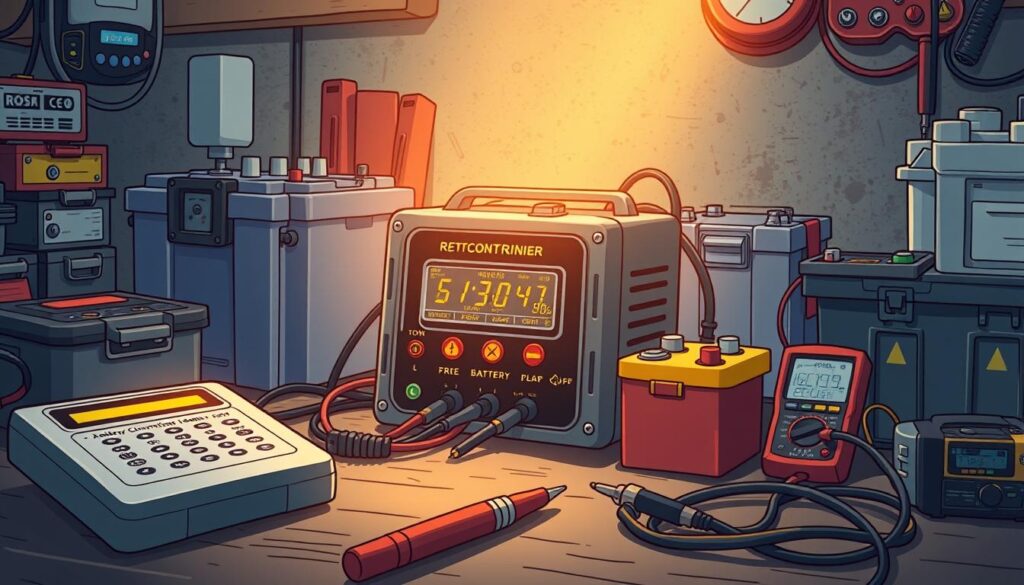
| Charger Brand | Desulfation Mode | Performance Improvement |
|---|---|---|
| BatteryMinder | Yes | 10-13% |
| Schumacher | Yes | Extended lifespan |
| CTEK | Yes | 2-3 times |
How to Choose the Right Reconditioning Charger
Choosing the right reconditioning charger is crucial for maximizing performance and ensuring longevity in your batteries. Several factors play a significant role in determining which charger meets your unique requirements. You should prioritize key features, consider reputable brands, and establish a budget that suits your needs.
Key Features to Look For
- Multiple charging modes: Look for chargers that offer standard charging, desulfation, and maintenance modes to enhance battery charger reconditioning outcomes.
- Smart technology: Chargers designed with adaptive technology, like those from CTEK and Schumacher, often yield a higher battery reconditioning device success rate.
- Indicators: Chargers with clear indicators help track reconditioning progress, which aids in efficient battery management.
Recommended Brands and Models
Several reputable brands stand out when it comes to achieving quality results with your battery charger:
| Brand | Model | Features | Success Rate |
|---|---|---|---|
| CTEK | MXS 5.0 | Smart charging, maintenance mode | High |
| Schumacher | SC1281 | Smart charger with desulfation | Improved lifespan reported |
| BatteryMinder | 1500/1510 | Specialized for aircraft batteries | Effective in maintenance |
Price Range and Budget Considerations
Battery chargers range in price, and selecting one should align with your budget while meeting essential performance criteria. Expect to pay from $30 to $150, depending on the features:
| Price Range | Model Type | Target Users |
|---|---|---|
| $30 – $60 | Basic chargers | Casual users |
| $60 – $100 | Smart chargers | Enthusiasts |
| $100 – $150 | Professional-grade | Frequent users |

By focusing on these elements when choosing the right reconditioning charger, you can significantly impact your battery’s performance and longevity. Strategies like desulfation can provide an approximate improvement of 10-13% in batteries6, indicating how the right equipment can optimize battery charger reconditioning outcomes671.
Maintenance Tips for Increased Battery Longevity
To enhance your battery’s longevity, adopting effective maintenance tips is crucial. Regular charging practices and proper storage techniques play significant roles in ensuring optimal battery performance and lifespan. By being attentive to specific indicators, you can easily recognize the signs your battery needs reconditioning, thus prolonging its usability.
Regular Charging Practices
One key to maintaining your battery’s health is practicing regular charging methods. Avoiding deep discharges and using smart chargers that feature maintenance modes ensures your battery remains at an optimal voltage level. It’s important to remember that a fully charged car battery should ideally reach around 12.6 volts, safeguarding it against damage caused by undercharging or overcharging910. Additionally, routine tests with a multimeter can help you monitor your battery’s health effectively.
Storage Best Practices
When not in use, store your battery in a climate-controlled environment to avoid extreme temperatures that could accelerate failure9. Using a battery insulator or maintainer can offer added protection and keep the battery charged during idle periods. Be aware that both high heat and extreme cold can adversely affect battery performance, thus emphasizing the importance of maintaining ideal operating temperatures.
Signs Your Battery Needs Reconditioning
Paying attention to the indicators of your battery’s health can prevent unexpected failures. If you notice slow engine cranking or a dashboard warning light, these may be early signs your battery needs reconditioning. Regular inspections every 2-4 weeks, including checking battery terminals and fluid levels, are also essential practices to ensure your battery operates efficiently10.
FAQ
Do battery reconditioning chargers really work?
What types of batteries can I use with a reconditioning charger?
How do battery reconditioning chargers work?
Are there limitations to using battery reconditioning chargers?
How can I choose the right battery reconditioning charger?
What maintenance tips should I follow for my batteries?
What are the benefits of using a battery reconditioning charger?
Do battery desulfators really work?
Source Links
- https://www.audizine.com/forum/showthread.php/898516-Anyone-use-a-battery-charger-reconditioner-to-salvage-a-battery – Anyone use a battery charger / reconditioner to salvage a battery?
- https://www.ufinebattery.com/blog/battery-reconditioning-explained-a-comprehensive-guide/ – What You Should Know About Battery Reconditioning
- https://www.linkedin.com/pulse/battery-reconditioning-charger-revive-your-batteries-today-hasan-urtmc – Battery Reconditioning Charger: Revive Your Batteries Today!
- https://www.instructables.com/Battery-Reconditioner/ – Battery Reconditioner
- https://www.lifepo4batteryshop.com/blogs/battery-reconditioning-guide.html – A Comprehensive Guide to Battery Reconditioning
- https://www.tractorbynet.com/forums/threads/smart-battery-chargers-with-reconditioning-modes.380125/ – Smart battery chargers with reconditioning modes
- https://www.garagejournal.com/forum/threads/automotive-battery-reconditioning.507513/ – Automotive battery reconditioning
- http://speed.academy/how-to-maintain-car-batteries-ctek/ – CTEK Teaches Us How Not To Be Battery Abusers
- https://10degreesautorepair.com/how-to-extend-the-life-of-your-car-battery-tips-and-tricks/ – How to Extend the Life of Your Car Battery: Tips and Tricks – 10° Automotive
- https://toolsense.io/maintenance/battery-maintenance-for-equipment-8-tips-for-maintaining-batteries/ – Battery Maintenance for Equipment: 8 Tips for Maintaining Batteries — ToolSense

